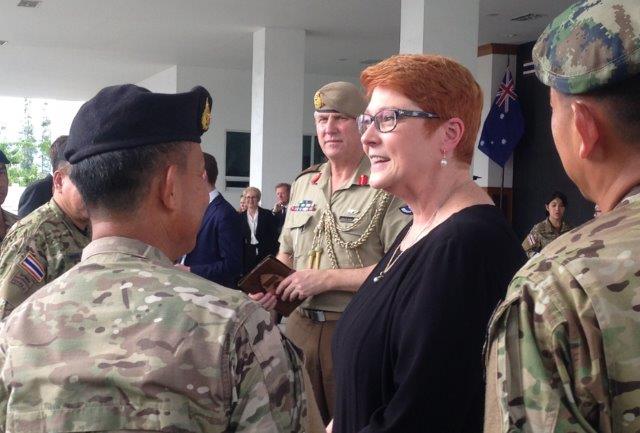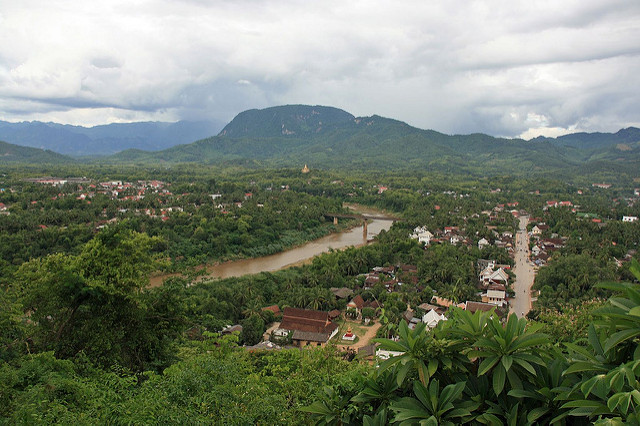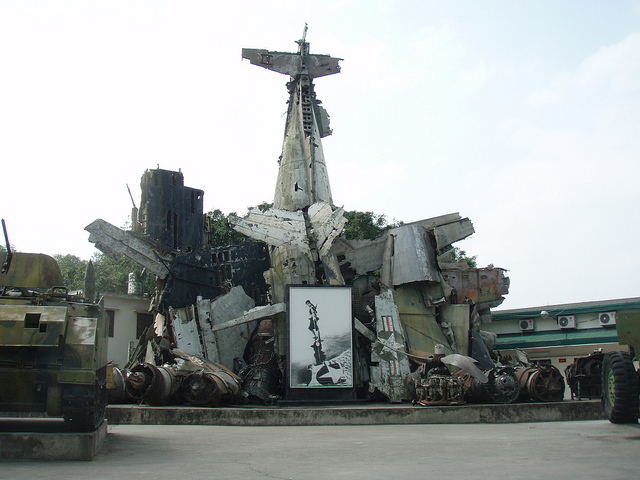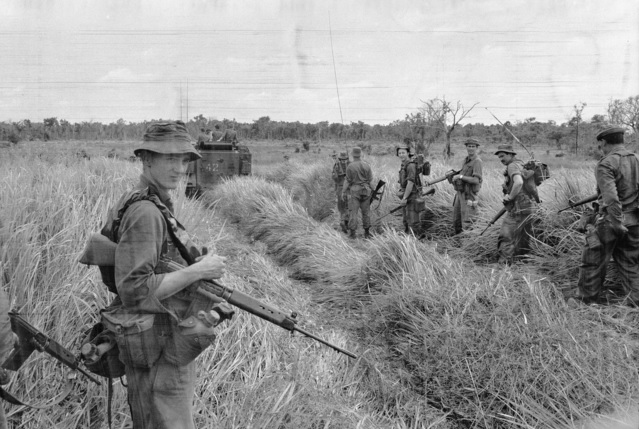
The period from the Tet offensive of early 1968 to the Moratorium demonstration of May 1970 was the turning point in the most important battlefield of the Vietnam War—the battle for American public opinion. To mark the 50th anniversary of this tumultuous time, including the downfall of President Lyndon Johnson and the beginning of President Richard Nixon’s strategy of ‘Vietnamization’, Americans in recent years have engaged in a number of re-examinations of the war.
This is therefore an appropriate time to reflect on what we have learned from 50 years of political argument and scholarly study about the war. How has a half-century of controversy, reflection and research affected presentations of the war for general audiences, such as the 18-hour documentary series The Vietnam War by Ken Burns and Lynn Novick and the British historian Max Hastings’s book Vietnam: An epic tragedy, 1945–1975?
Much has been learned about the three main participants in the war. We now know, in immense detail, how the United States conducted the war in its military, political and diplomatic dimensions, and how the war affected American politics and society. We have learned much more, especially in the past 10 years, about Hanoi’s war, including the way in which Ho Chi Minh and other leaders were sidelined by the ruthless Stalinist, Le Duan. There are occasional glimpses of sympathy for the idea that the ill-fated South Vietnam included not just a corrupt and incompetent politico-military elite but also some genuine nationalists, with legitimate fears for their future under a communist regime.
A fourth dimension of the war, however, has attracted less attention. Because most accounts have been written by Americans, about Americans and for Americans, they often have little to say about the aspect of greatest concern to Australians, the regional context. Two elements of this deserve more attention than they generally receive.
The first is the famous—many would say notorious—domino theory, the idea that a communist victory in South Vietnam would lead to a spread of communist or allied regimes throughout Southeast Asia. After Saigon fell in 1975, Laos and Cambodia were the only two ‘dominoes’ to succumb to communist regimes, and in Cambodia’s case to a rival form of communism. Consequently, the domino theory was often discredited. But was it really so foolish to subscribe to the idea in 1964–65, when Australia made its crucial decisions about committing combat forces?
At that time, Australia’s principal concerns in the region were over the stability of Malaysia and Indonesia. Tensions between Kuala Lumpur and Singapore were leading towards the expulsion of Singapore in August 1965. The Indonesian Communist Party, the PKI, was the third largest communist party in the world, surpassed only by those of the Soviet Union and China, and President Sukarno boasted of his growing links with Beijing and other radical regimes. Sukarno’s Confrontation of the new federation of Malaysia seemed to threaten not only the security of Australia’s Commonwealth partner but also the stability of the whole region. The future of Laos and Cambodia was clearly tied to the outcome of the conflict in Vietnam. Both Thailand and the Philippines faced communist insurgencies within their own borders.
What we now know, but few foresaw in 1965, was that by 1968 the whole situation had changed. Indonesia was governed by a Western-oriented regime, which was ruthlessly eliminating real or alleged communists; Indonesia’s Confrontation of Malaysia had ended peacefully; Malaysia and Singapore were like a successfully divorced couple, functioning better as neighbours than as an unhappy union; Thailand and the Philippines were more secure; and these five nations had formed the Association of Southeast Asian Nations (ASEAN). As early as 1967 the CIA reported to President Johnson that the regional and global implications of an American withdrawal from Vietnam would not be as catastrophic as many had argued in 1964–65, but, having committed his nation, Johnson evidently felt that he could not face becoming the first US president to lose a war.
We will never know just what the regional ramifications would have been if the Saigon government had collapsed in 1965, as seems certain in the absence of massive Western intervention, but it is highly likely that those ramifications would have been profound. That is why some Australians and others still justify the commitment by the argument most famously expressed openly by the leader of one of the crucial dominoes, Singapore’s Lee Kuan Yew. Lee and his successors have consistently argued that the American intervention was commendable because it delayed the fall of Saigon by 10 years, from 1965 to 1975, by which time Thailand, Malaysia, Singapore and Indonesia were much better able to cope with the new regional balance. It is an argument either totally overlooked or given short shrift by most Americans. From their perspective, the political, social, economic and military costs suffered by the United States were hugely disproportionate to the benefits in a region of secondary importance to American interests.
Australians are entitled to assess the strategic costs and benefits differently.
To make a ruthlessly hard-headed assessment with 50 years of hindsight, we can see that the cost–benefit ratio of the commitment would have been very different if Australia had been able to withdraw its forces, or at least reduce its commitment, in the late 1960s. It was probably inevitable that Prime Minister Robert Menzies committed Australian forces to the war in 1965, but regrettable that the commitment was open-ended and unqualified, with no exit strategy. Consequently John Gorton, as prime minister from 1968 to 1971, found it impossible to extract Australia from a conflict that was now a political burden, and for which the regional context no longer provided a convincing justification. Menzies’ great admirer, John Howard, learned the lesson well. Committing Australian forces to the invasion of Iraq in 2003, Howard ensured that Australian troops were put in rapidly and withdrawn rapidly. As a result, although Iraq was always more controversial than Vietnam, Howard suffered no political pain in the 2004 election.
There is another sense in which we still pay too little regard to the regional context. That is what we might call the ‘deep history’. Hanoi was founded in the year 1010. For the next millennium, people of the Red River delta showed both the intention and the ability not only to defend their independence from whoever was ruling their powerful northern neighbour, but also to expand their influence across the Indochina peninsula. That led to wars and rivalries with various kingdoms and polities. It took until the 16th century for Hanoi to reach the Mekong delta. In the 19th century the Vietnamese and Thais fought several wars. In this light, the alliances and enmities of the 20th century take on an added dimension, quite separate from the impact of European colonialism, international communism, or their respective opponents.
How does all this reflect on Australia’s involvement? The commitment, so important to us, hardly figures in most American accounts of the war. The only reference to Australia I detected in the Burns and Novick documentary is the suggestion, of questionable accuracy, that the Australians were the source of one of the racist terms that American soldiers applied to the Vietnamese. As one might hope from a British author, Max Hastings pays a little more attention to ‘Aussies and Kiwis’, but his book is also aimed primarily at an American audience. Given the size of the respective commitments by the US and Australia, this imbalance is perhaps not surprising; but we need to understand just how and why Australia came to be committed to the Vietnam War.
Despite the rhetoric of ‘100 years of mateship’, the commitment was not simply a matter of Australia loyally supporting the US ‘all the way’. The world’s greatest superpower and a modest middle power differed in their strategic goals as well as in the scale of their commitments. The dominoes that concerned the US were first France and then Japan, while Australia had more immediate concerns about the region to our near north. Both Canberra and Washington based their policies on mistaken assumptions, but they made different mistakes.
In current debates over Australian strategy, Vietnam and the 2003 invasion of Iraq are often cited as two adventures in which we uncritically followed the US, two examples of what are often disparaged as Australia’s habit of fighting ‘other people’s wars’. In fact, there were at least two fundamental differences between the Vietnam and Iraq commitments. First, Iraq was about regime change; Vietnam was not. In Vietnam, the US and its allies were seeking to defend a regime, not to overturn the status quo. Whether the South Vietnamese regime had the legitimacy and capacity to survive was the central issue as far as both Hanoi and Saigon were concerned. The American aim was to prevent Hanoi from taking over the state south of the 17th parallel; it was never the goal to overthrow the communist regime in Hanoi.
Some critics on the right said that the Americans should have invaded the north, but Johnson knew that to do so would precipitate a massive response from China and perhaps spark a world war with the possible use of nuclear weapons. In that sense, the Vietnam commitment was more similar to the first Gulf War of the early 1990s, when President George H.W. Bush led a coalition that pushed Saddam Hussein back from his attempt to incorporate Kuwait but—in my view, wisely—did not push on to Baghdad and remove Saddam from power. Today the mantra underlying Australia’s approach to world affairs is support for the rules-based international order. By that criterion it is much easier to justify the defence of South Vietnam than the invasion of Iraq.
The second difference is a simple matter of geography. Vietnam is much closer to Australia than Iraq is.
Amid the never-ending tension between ‘alliance’ and ‘independence’ as the poles around which Australian strategic debates revolve, governments always say that they have found the right balance, so that our alliances support our regional relationships and vice versa. In the 1950s and 1960s, the Australian government argued it had found the right balance in what was known as ‘forward defence’. This (pace the critics) was not merely a conflation of the fears of the Red Scare and the Yellow Peril. The government indicated that it would only commit forces to Southeast Asia, not the Middle East (despite pressure from our principal ally to do so), and that Australia would only fight alongside Britain, the United States or both, in a multiracial coalition to avoid the perception that white nations were dictating the future of Asian nations. This strategic approach worked well in the 1950s and early 1960s, including small but successful commitments to the Malayan Emergency and the Indonesian Confrontation.
There is ample evidence that, when faced with the question of involvement in Vietnam in 1964–65, Menzies thought that he was simply applying the same formula that had worked so well in the previous 15 years of his prime ministership. We now know that he failed to understand several major differences. First, Australians at all levels—in government, business, the media and the general public—knew much less about the mainland of Southeast Asia, especially the former French colonies in today’s Vietnam, Laos and Cambodia, than they did about maritime Southeast Asia, especially the former British and Dutch territories that today are Indonesia, Malaysia and Singapore. Australian politicians, officials, diplomats and military leaders had fewer opportunities to make independent political and military assessments, or to exercise independent diplomacy, in and around Vietnam than was the case in the islands and peninsulas between Sumatra and New Guinea. Australia also had less confidence in, or opportunity to influence, our principal ally’s military and political strategy.
Second, Menzies underestimated the risk that the US might be defeated or forced into a humiliating withdrawal. Given his personal experience as a young man of military age in 1917, and then as a young prime minister in 1939–41, it is not surprising that Menzies, like many of his generation, assumed that the crucially important point was to ensure that the US was engaged in the struggle. The danger, as they saw it, was American isolationism, not imperial overreach. Taking these points together, Menzies and his colleagues did not realise that the Americans themselves knew so little about the region, and greatly overestimated their ability to succeed where the French had failed.
A famous Chinese proverb, quoted but not originated by Sun Tzu, is sometimes rendered as: ‘Know yourself, know your enemy, and in a hundred battles win a hundred victories.’ The lessons of Vietnam for Australian strategists cannot be expressed so succinctly, but a prosaic summary might be as follows: before committing to a distant intervention alongside an ally, be sure that you know yourself; that you know your enemy; that you know your ally; and that you know not just the recent history but also the deep history of the contested territory and its surrounding area. Then, and only then, will you have a reasonable chance of success.
This essay is adapted from a longer paper, ‘Now we know: a half-century perspective on Australia’s Vietnam War’, delivered to the Royal Historical Society of Victoria in 2018 and published in the Victorian Historical Journal, vol. 90, no. 1, June 2019.
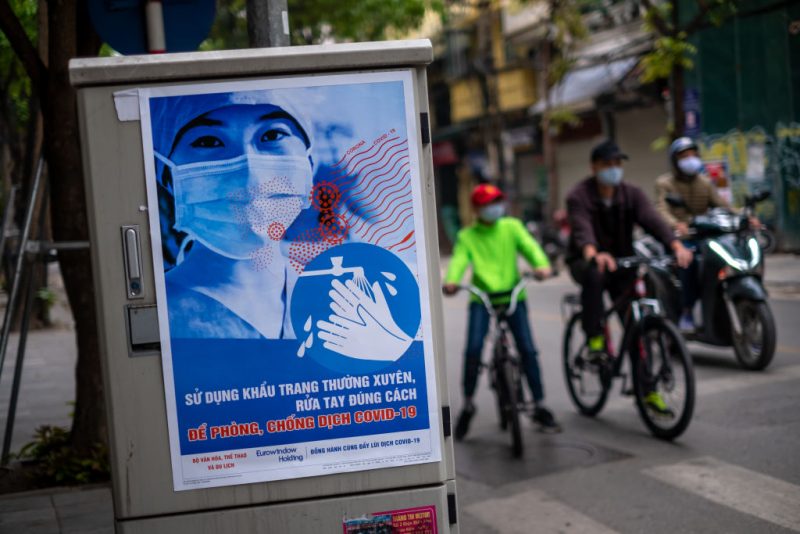
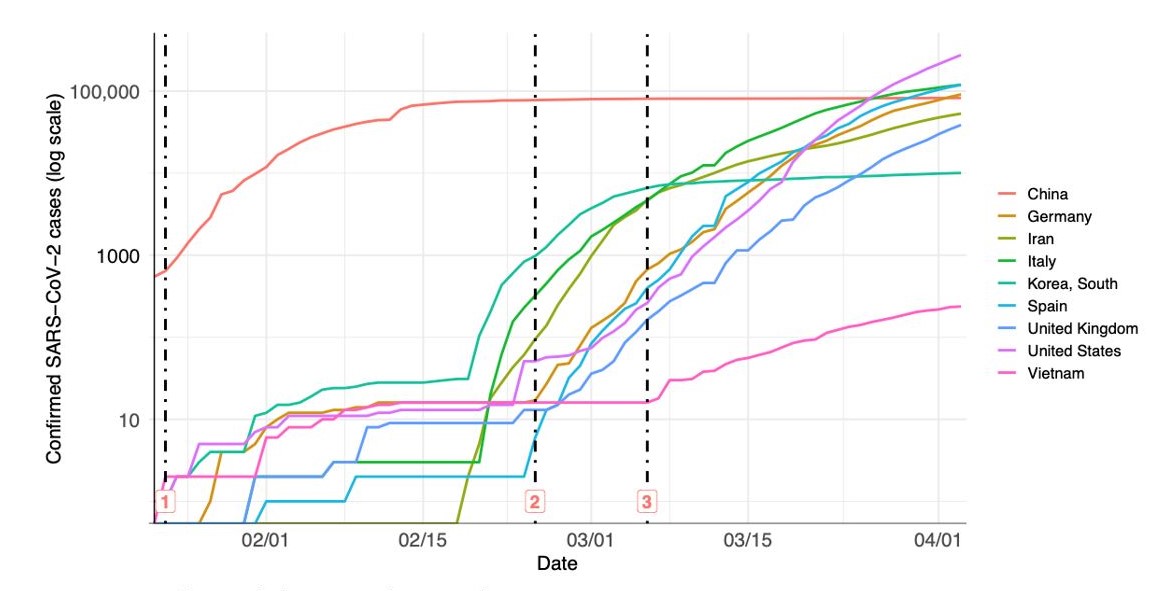 Source: A.I. for Social Data Lab, Hanoi.
Source: A.I. for Social Data Lab, Hanoi.

